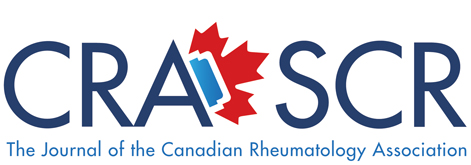Winter 2023 (Volume 33, Number 4)
CPD for the Busy Rheumatologist
Knowledge Translation: What’s in It for Me?
By Raheem B. Kherani, BSc (Pharm), MD, FRCPC, MHPE; Elizabeth M. Wooster, M.Ed, PhD(c); and
Douglas L. Wooster, MD, FRCSC, FACS, DFSVS, RVT, RPVI
Download PDF
Dr. AKI Joint has just finished obtaining MOC section 3 credits and reviewing the
QI cycle (www.craj.ca/archives/2023/English/Fall/
Kherani-Wooster-Wooster.php).
“I now have a better idea about what to do to garner some section 3 credits. They seem a bit easier to obtain. However, during my review, I read about knowledge translation (KT) and was curious about how this would apply to my learning.” |
What is Knowledge Translation?
The Canadian Institutes of Health Research define knowledge translation as “a dynamic and iterative process that includes the synthesis, dissemination, exchange and ethically sound application of knowledge to improve health, provide more effective health services and products, and strengthen the health care system” (Strauss et al). In Canada, the term is often used interchangeably with knowledge transfer and knowledge exchange. The important parts to focus on in this definition are the concepts of movement of knowledge (usually from creator to user) for the improvement of the health-
care system and the services it provides (Figure 1). This movement can occur in many ways and is often seen as integrated with the generation of knowledge. However, if the step of KT does not occur, new learnings are not integrated into medical practice.

Reflection continues to be an important process for learning. Through KT we can reflect on what we know and, thereby, transform concepts from personal experiences and generalizations to changes in behaviour. KT helps us to incorporate continually changing evidence into application. As such, this process is important for patients and practitioners.

Knowledge Translation and Rheumatology
The history of rheumatology provides an excellent example of this process. In the early 1800s, Augustin Jacob Landré-Beauvais described “Primary Asthenic Gout”. In 1859 Alfred Garrod redefined “Rheumatic Gout”. In comparing these treatises, we have come a long way in separating rheumatoid arthritis (RA) from gout. Although pathology is foundational, KT has catapulted our knowledge base forward, through our comprehension of immunology and clinical science. The discovery and application of HLA-DR4 as a susceptibility factor for RA has been an important contributor, but it is not the sole determinant of who will develop RA. Fast forward and our progressive understanding of the immune system and potential therapeutic targets has dramatically improved the quality of life of our patients. In translating this knowledge, we need strategies to review, reflect, and apply this knowledge to our day-to-day practice and patient care.
“Now, that I have learned a bit more about KT,
I will need to look at continuing to improve my practice to improve patient care.”
- Dr. AKI Joint.
Raheem B. Kherani, BSc (Pharm), MD, FRCPC, MHPE
CRA Education Committee Past Chair,
Program Director and Clinical Associate Professor,
University of British Columbia
Division Head, Rheumatology, Richmond Hospital
Clinician Investigator, Arthritis Research Canada
Elizabeth M. Wooster, B.Comm, M.Ed, PhD(c)
OISE/University of Toronto
Research Associate,
Faculty of Medicine, Toronto Metropolitan University
Douglas L. Wooster, MD, FRCSC, FACS, DFSVS, RVT, RPVI
Professor of Surgery,
Temerty Faculty of Medicine, University of Toronto
References:
1. Entezami P, Fox DA, Clapham PJ, et al. Historical perspective on the etiology of rheumatoid arthritis. Hand Clin. 2011; 27(1):1-10. doi:10.1016/j.hcl.2010.09.006
2. Kitto SC, Bell M, Goldman J, et al. (Mis)perceptions of continuing education: insights from knowledge translation, quality improvement, and patient safety leaders. J Contin Educ Health Prof. 2013 Spring; 33(2):81-8. doi: 10.1002/chp.21169. PMID: 23775908.
3. Lockyer J, Gondocz ST, Thivierge RL. Knowledge translation: the role and place of practice reflection. J Contin Educ Health Prof. 2004 Winter; 24(1):50-6. doi: 10.1002/chp.1340240108. PMID: 15069912.
4. Straus SE, Tetroe J, Graham I. Defining knowledge translation. CMAJ. 2009 Aug 4;181(3-4):165-8. doi: 10.1503/cmaj.081229. Epub 2009 Jul 20. PMID: 19620273; PMCID: PMC2717660.
|




